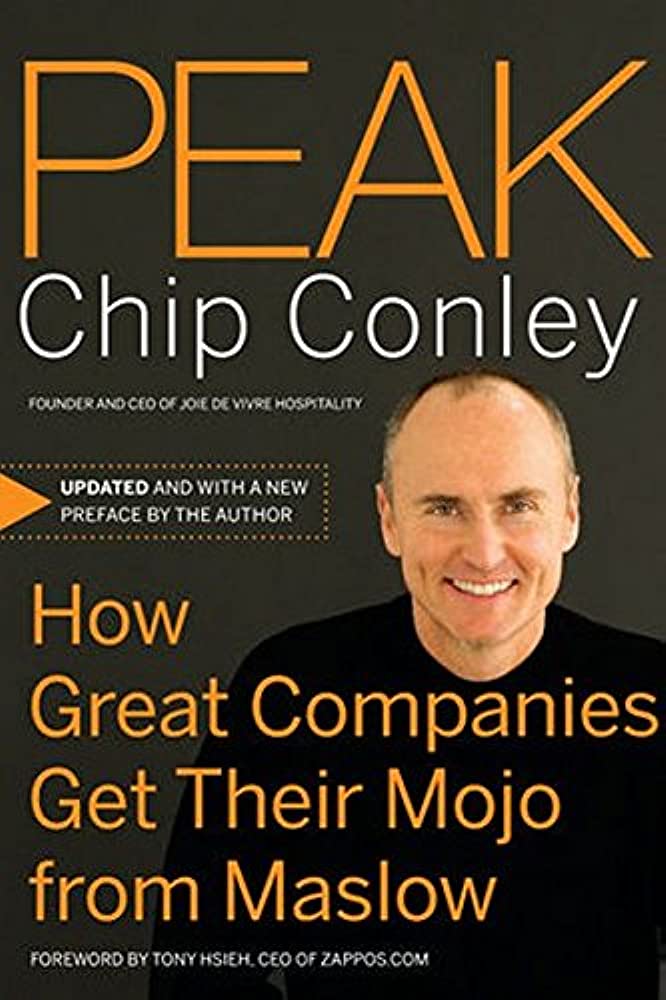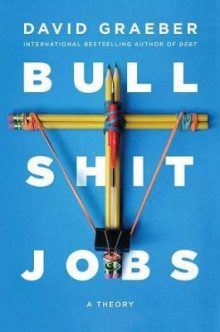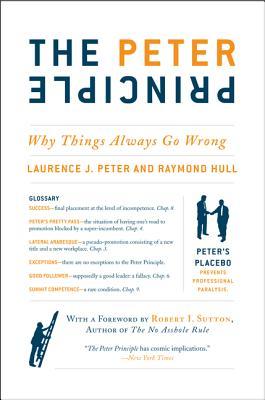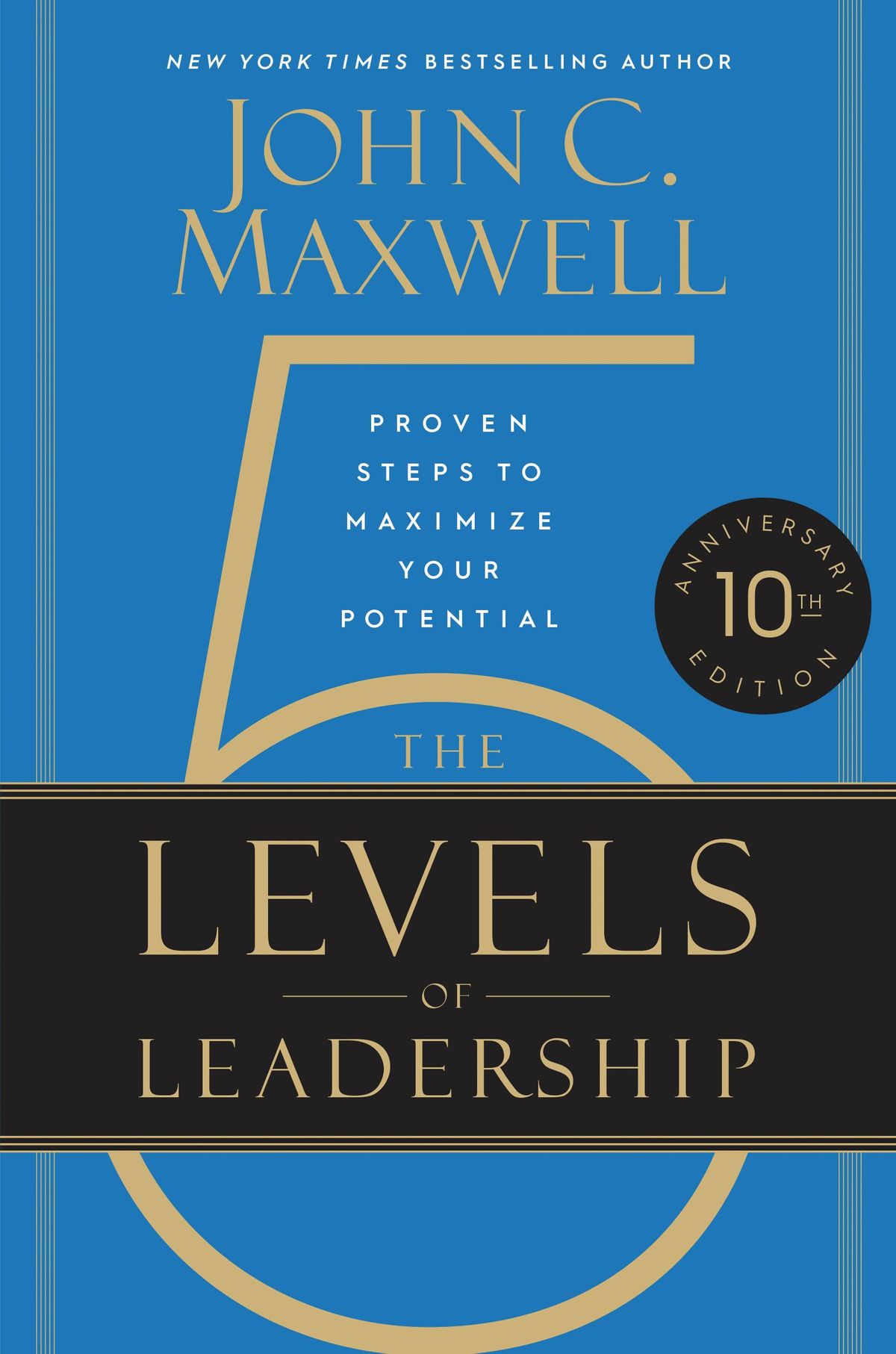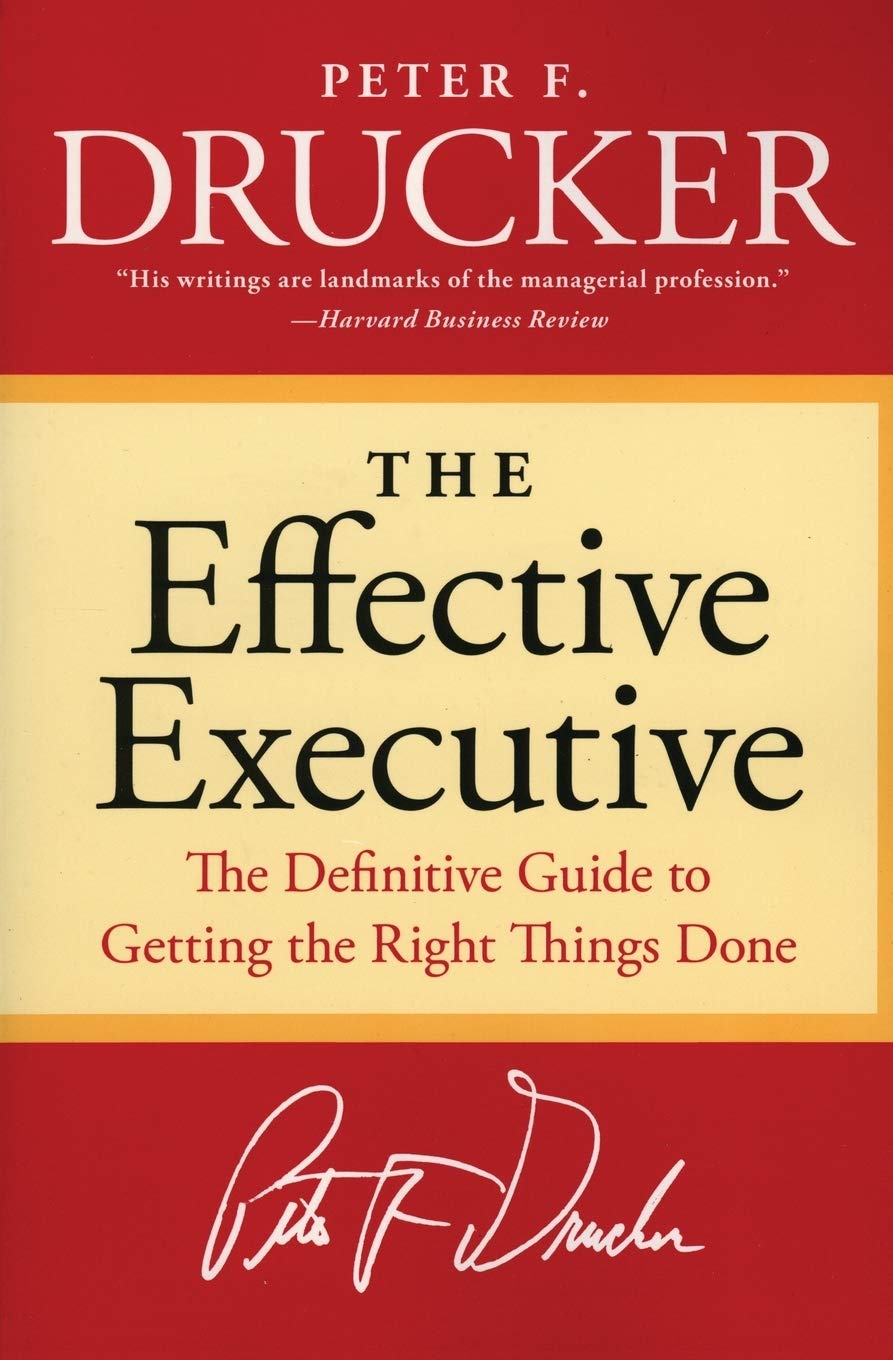Eat That Frog!
by Brian Tracy
- Career
- Ashto =
- Jonesy =
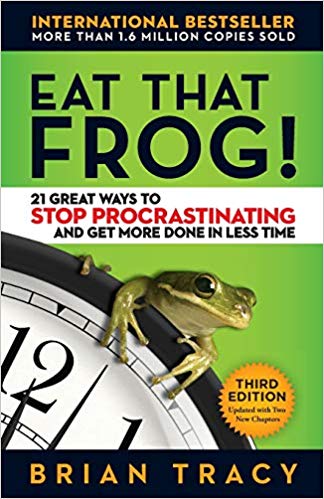
EAT THAT FROG!
21 Great Ways to Stop Procrastinating and Get More Done in Less Time
INTRO
There is never enough time to do everything you have to do. You are literally swamped with work and personal responsibilities, endless emails, social media, projects, side projects, stacks of newspapers to read, a pile of books you want to get to ‘some day’ as soon as you get caught up on everything else. But the fact is that you are NEVER going to get caught up. You will never get ‘on top’ of your tasks. You will never get far enough ahead to be able to get to all those emails, books, newspapers, and leisure time activities that you dream of. The solution? Eat That Frog!
Forget about trying to solve your time management problems by being more productive. No matter how many personal productivity techniques you master, there will always be more to do than you can ever accomplishing the time you have available to you, no matter how much it is.
You can get control of your life only by changing the way you think, work, and deal with the never-ending river of responsibilities that flow over you each day. You can get control of your tasks and actives only to the degree that you can STOP doing some things and START spending more time on the few activities that can really make a difference in your life.
Grab a copy of the book here: https://www.bookdepository.com/Eat-That-Frog-21-Great-Ways-Stop-Procrastinating-Get-More-Done-Less-Time-Brian-Tracy/9781626569416/?a_aid=adamsbooks
The truth about frogs
Every idea in this book is focused on increasing your overall levels of productivity, performance and output on making you more valuable in whatever you do. The ability to concentrate single-mindedly on your most important task, to do it well and to finish it completely, is the key to great success, respect, achievement, status and happiness. his key insight is the soul of this book. It contains 21 powerful principles on personal effectiveness.
It has been said if the first thing you do each morning is eat a live frog, you can go through the day with the satisfaction knowing that is probably the worst thing to happen to you that day. Your frog is your biggest most important task, the one you are most likely to procrastinate on if you don’t do something about it. It is also the task that will have the greatest possible impact on your life and results
2 rules of the frog
-
- you have to eat the ugliest first
- if you have to eat it, it doesn’t pay to sit their looking at it for too long
Set The Table
Before you can determine your “frog” and get on with the job of eating it, you have to decide exactly what you want to achieve in each area of your life. CLARITY is perhaps the most important concept in personal productivity. The number one reason why some people get more work done faster is because they are absolutely clear about their goals and objectives, and they don’t deviate from them. The greater clarity you have regarding what you want and the steps you will have to take to achieve it, the easier it will be for you to overcome procrastinations, eat your frog, and complete the task before you
“only about 3% of adults have clear written goals”. A major reason for procrastination and lack of motivation is vagueness, confusion, and fuzzy-mindedness about what you are trying to do and in what order for what reason.
PROCESS
Step 1: Decide exactly what you want
-
-
- Either decide for yourself, or sit down with you boss and decide together. Become crystal clear about what is expected of you / what you expect of yourself, and in what order of priority. Many people work day in day out on low-value tasks because they never step back and set goals/priorities. Stephen Covey: “if your ladder is leaning against the wrong wall, every step we take just gets us to the wrong place faster”.
-
Step 2: Write it down
-
-
- an unwritten goal can lead to confusion / vagueness / misdirection / mistakes
- write you goals down, crystalise them, give them some tangible form
-
Step 3: Set a deadline on your goal; set subdeadlines if necessary
-
-
- a goal or decision without a deadline has no urgency
- it has no real beginning or end – without a definite deadline accompanied by the assignment or acceptance of specific responsibilities for completion, you will naturally procrastinate and get very little done
- Parkinson’s Law: task expands to the time allowed
- to counter parkinson’s law – set tight deadlines, and give each sub-task a sub-deadline so that you stay on track
-
Step 4: Make a list of everything you can think of that you are going to have to do to achieve your goal
-
-
- add all activities required to the list
- a written list gives you a visual picture of what stands between you and your goal – it shows you exactly what needs to be done in order to achieve it – it gives you a track to run on
-
Step 5: Organize that list into a plan
-
-
- organise your list by priority and sequence
- take a few minutes at the start to work out what is urgent and what can be done later
- work out the critical tasks that need to be done before you can do others
- even better, turn your list into a series of boxes and circles, with links and arrows showign the relationships between each task
- ie: process flow OR gannt chart
- you’ll be amazed how much easier a goal becomes when you break it down into individual tasks
- organise your list by priority and sequence
-
Step 6: Take action on your plan immediately
-
-
- do something – do anything!
- “an average plan vigorously executed is far better than a brilliant plan on which nothing is done”
- for you to achieve any kind of success, execution is everything
-
Step 7: Resolve to do something every single day that moves you toward your major goal
-
-
- Build this into your daily schedule
- keep pushing forward
- once you start moving, keep moving – don’t stop
-
The power of written goals
-
-
- clear written goals have a wonderful effect on your thinking
- they motivate and galvanize you into action, stimulate your creativity, release your energy and help you overcome procrastination
-
Consider the Consequences
The mark of a superior thinker is his/her ability to accurately predict the consequences of doing or not doing something.
The potential consequences of any task or activity are the key determinants of how important a task really is to you. This way of evaluating the significance of a task is how you determine what your next frog really is. Your attitude toward time, your “time horizon”, has an enormous impact on your behaviour and your choices. People who take a long-term view of their lives and careers always seem to make much better decisions about their tme and activities than people who give very little thought to the future. RULE: Long-term thinking improves short-term decision making.
THINK: “What are the potential consequences of doing or not doing this task?”. RULE: Future intent influences and often determines present actions. Unseccessful people, on the other hand, think more about short-term pleasure and immediate gratification while giving little thought to the long-term future. FOR EXAMPLE – coming into work earlier, reading regularly in your field, taking courses to improve your skills, focusing on high-value tasks… these combine to have enormous benefit in your future. On the other hand – sleeping in, coming in late, reading the newspaper, drinking coffee, socialising with coworkers instead of getting down to work… these are all enjoyable in the shjort term, but don’t lead to great future success – instead result in no promotions, underachievement, long-term frustration
The Law of Forced Efficiency: “There is never enough time to do everything, but there’s always enough time to do the most important thing”. Put anohter way – you can not every every single tadpole in the pond every single day… but you can eat the biggest, ugliest frog every day and they will be neough for now (until tomorrow when the next tadpole grows into the next frog!). What this meanas… you will NEVER get “caught up” – you can never really complete your ‘to do’ list… get that wishful idea out of your mind. All you can hope for is to be on top of your most important responsibilities, the others will just have to wait.
Three questions for maximum productivity
- What are my highest-value activities?
- what are the biggest frogs that you have to eat to make the biggest contribution?
- think this through yourself, ask your boss/colleagues/family
- what can I and only I do, that if done well, will make a real difference?
- this comes from the legendary Peter Drucker
- it is one of the most important questions for achieving personal effectiveness
- What is the most valuable use of my time right now?
- What is my biggest frog at this moment?
Goethe: “The things that matter most must never be at the mercy of the things that matter least”
Resist the temptation to clear up the small things first. They maybe be small and quick, but they’re probably not that important . It’s also in a way another sense of procratination – you feel like you’re being productive, but really you’re just avoiding the frog. You have to eat that frog!
The hardest part of any task is getting started on it in the first place. One you actually begin work on a valuable task, you will be naturally motivated to continue. A part of your mind loves to be busy working on significant tasks that can really make a difference, so your job is to keep feeding this. Start on a small part of the important task, not just a small easy thing to tick off the bottom of your list.
Plan Every Day In Advance
You’ve heard the expression: “How do you eat an elephant?” – “One bite at a time”
-
- “How do you eat your biggest, ugliest frog?”
- The same way
- You break it down into specific step-by-step activities and then you start on the first one.
Your mind, your ability to think, plan, and decide – is the most powerful tool for overcoming procrastination and increasing your productivity. Your ability to set goals, make planes, and take action on them determines the course of your life. Your ability to make good plans before you act is a measure of your overall competence. The better than plan you have, the easier it is for you to overcome procrastination, to get started, to eat your frog, and then, to keep going.
Brian: “every minute spent in planning saves as many as ten minutes in execution”. It only takes 10 to 12 minutes to plan, but this wil save you up to 100 inutes to 2 hours in wasted time and diffused effort throughout the day. Sounds completely arbitrary, but I think it’s directionally right. If you take a few minutes at the start of the day to think, plan, lay out some good intentions, then you’re stuffing around less later on in the day. You won’t be task-switching as much, you won’t be wondering what to do, when to do it, and what to do next. Taking some quiet time ot think and plan can set you up to better and more efficiently achieve your goals and eat your frog
SUGGESTION: make your list the night before for the workday ahead. At the end of your work day, take 10 minute at the end of the day to play your NEXT day. Write a list of outstanding tasks – move everything you aven’t yet accomplished on your list onto the list you have for the coming day, PLUS, add anything new required for tomorrow. Laying out everything the night before when you’re more calm means you can more clearly think about your priorities for the next day (rather than walking in during the morning, facing frantic tasks or bombs that have gone off in your inbox – if you get straight into ACTION mode without thinking first, you won’t be as effective or efficient).
Different lists for different purposes
MASTER LIST
-
- everything you need to do at some point in the future
MONTHLY LIST
-
- at the end of the month, make your list for the next month ahead
- generally this will be tasks not yet completed from this month, plus any new tasks you’re transferring in from the master list
WEEKLY LIST
-
- Planning your entire week in advance, usually on a Sunday night before satarting on Monday morning
- taking an hour on a sunday afternoon to plan your week ahead can lead to drastic improvements in output
DAILY LIST
-
- the point of the lists: 1) getting it out of your brain so you don’t need to remember, 2) identifying priorities, 3) putting things in logical sequence
- As you work through your lists, you will feel more and more effective and powerful
- you will feel more in control of your life
- postitive feedback loop
- ticking off tasks gives you more energy to tackle the next one
- sense of positive momentum helps you overcome procrastination – feeling of progress gives you a little buzz of excitement
- When you plan each day in advance, you will find it much easier to get going and to keep going. the work will go faster and smoother than ever before.
Specific activities that you are going to accomplish the following day (written out and ordered the night before)
Use the ABCDE Method
Think on paper
-
- First, put on a list all of the things that you need to do in the coming day
- Then, place an A/B/C/D/E next to every task
A = something that is very important, something you MUST do
-
-
-
- if you have more than one A, make them A1, A2, A3 in order of priority
- A1 is your biggest ugliest frog of all
- EG: visiting a key customer, finishing the report for your boss, preparing for the afternoon presentation, attending the board meeting
-
-
B = Tasks that you ‘Should’ do
-
-
-
- Should VS Must
- These are the tadpoles – you should do them, but the consequences of not doing them immediately are only mild
- someone may be unhappy or inconvenienced if its not done, but the ‘A’ tasks will have serious consequences (positive or negative) if you fail to do it
- EG: returning a phone call, reviewing your emails
-
-
C = Nice to do
-
-
-
- there are no consequences here for not doing the task
- EG: phoning a friend, having coffee with a coworker, completing a personal errand during work break
-
-
D = Delegate
-
-
-
- delegate things to other people if they don’t need to be done by you
- the more D you can delegate, the more you can focus on your A
-
-
E = Eliminate
-
-
-
- once you identify something on your list that doesn;t need to be done, get rid of it all together
- if you can not do a task and it won’t make any real difference, then don;t bother with it. don’t do it yourself, don;t get someone else to do it, just give it an E then cross it off and forget about it and move on to something more important
-
-
NEXT – Take action immediately
-
- The key to making this all work is to then get stuck into your A1 task straight away
- Use your willpower to get going then stay going on this one most important task
- eat the whole frog and don’t stop until it’s completed
Prepare Thoroughly Before You Begin
One of the best ways for you to overcome procrastination and get more things done faster is to have everything you need at hand before you begin. When you are fully prepared, you are like a cocked gun or an archer with an arrow pulled back taut in the bow. This is like getting everything ready to prepare a complete meal – you set all of the ingredients out on the counter in front of you, then you begin putting them together one step at a time. EG: (you don’t do step one, put the oil in the fry pan, then step two says chop the onion, only to then realise that at step 3 you haven’t even bought the steak from the supermarket yet).
This has two components: (1) have everything you need, (2) clear away everything you don’t need. The hard part of a task is getting started, so don;t get 10% into the task and get some momentum up, only to realise that you’re missing something you need. you’ll need to break the momentum to get it, then you need to try to kickstart yourself again. The less distractions the better. clear away the things you don’t need so that you can stay focused on eating that frog once you start munching down.
Slice and Dice the Task
A major reason for procrastinating on big important tasks is that they appear so large and formidable when you first approach them
Salami Slice
Looking at the whole sausage at once can be daunting, so instead you just take one slice of the salami. This method involves laying out the whole task in great detail, writing down each required step in order, then resolve to just do the first slice for now
Psychologically it’s easier to start on it a slice at a time, rather than trying to dive into the whole project. Soon you’ll find yourself tackling the whole task without even noticing – you have one slice then you can’t help having another and another, and before you know it you’ve just eaten an entire sausage
EG: writing a book one page at a time
Swiss Cheese
A different method/approach is the ‘swiss cheese’ method – you resolve to punch a whole in the middle of the task, like the holes in a slice of swiss cheese
You do this by resolving to work on the task for a specific chunk of time. it can be as little as 5 or 10 mins, or as long as an hour, but the point is you attack a tricky part of the task and get it done to punch a whole through the cheese. You might find that after a hole has been taken out, the rest of the cheese becomes a little easier to break down – or you may only have a few crumbs left.
EG: setting up a new website, you install wordpress and pick a theme and you’ve done a big bulk of it
Not to mention – in order to Eat That Frog – adding some salami and cheese makes for a tasty sandwich
Create Large Chunk of Time
Most of the really important work you do requires large chunks of unbroken time to complete. The key to success in this method of working in specific time segments is for you to plan your day in advance and schedule a fixed time period for a particular activity or task. Make an ‘appointment’ with yourself, block out your calendar, and stick to it. That way – you can eat that frog.
Deep Work & The Effective Executive –
- In the book The Effective Executive by Peter Drucker, he spoke about putting all of the little stuff together to then allow room for large uninterrupted chunks of time,
- In the book Deep Work by Cal Newport, he said that it’s important to focus for long periods of time in order to do things that are truly important and valuable.
The best time to do this is to get up early – everyone else is a asleep still, so you won’t be distracted by calls and emails and other demands on your time. If you can get up early and work at home in the morning for 30mins or 60mins and sit down and do some really good stuff without coworkers distracting you (or you distracting yourself!), then over a few short weeks you’ll notice that you were able to achieve a hell of a lot of stuff.
Take it One Oil Barrel at a Time – Eat That Frog!
“By the yard it’s hard, but by the inch it’s a cinch!”
One of the best ways to overcome procrastination is for you to get your mind off the huge task in front of you and focus on a single action that you can take. The best way to eat that frog it to chew it up one bite at a bite. Lao Tzu: “the journey of a thousand miles begins with a single step” (so I guess Brian Tracy would say “a meal of an entire ugly frog begins with a single bite”)
Crossing a Great Desert: Brian Tracy was crossing the Sahara desert, in the middle of Algeria. This single stretch was 500 miles long, without any water/food/blade of grass / not even a single fly between one side and the other, totally flat yellow sand in all directions. More than 1,300 people had perished trying to cross it – often the winds blow the sands and cover the tracks and roads, so people get lost in the night and are never found alive again. As a guide, the French had marked the track with black 55-gallon oil drums every 5 kilometres, which was exactly the distance of the horizon at that curvature of the Earth. It meant that at all times of the day you could see two barrels: the one you had just passed, and the one in front of you. Now all you had to do in order to get from one side to the other was to steer toward to next oil barrel. This way, you’re able to cross the biggest desert in the world just by “taking it one barrel at a time”.
Whatever you’re doing, and whatever you need to do next, just take it one step at a time, keep heading toward the next oil barrel, and keep chewing that next bite of the frog – Eat That Frog!




